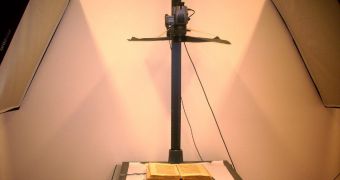The Vatican and the European Space Agency (ESA) are working together to digitize a large number of ancient books stored in the Vatican Library. The manuscripts are extremely sensitive, but the Holy See wants to preserve them for future generations.
ESA is contributing to this by using a special scanning and data-storage technique it developed some time ago for its most important missions. Some of the spacecraft using it include the Herschel Space Observatory, XMM-Newton, SOHO and Planck.
The agency also uses the method to store satellite images of the sky, in a file format called the flexible image transport system format, or FITS. Originally, it was developed for use with radio astronomy, which does not use visible-light wavelengths.
One of the main reasons why the Vatican decided to work with ESA was that the old manuscripts are very delicate, meaning that they need to be handled with the utmost care. Some of the books are more than 1,000 years old, and extremely important to the Catholic Church.
But FITS is able to handle whatever is needed of it. “Any kind of data you can use for astronomy can fit inside this format,” explains the head of the ESA scientific archives, Pedro Osuna. He adds that the format was developed in the 1970s.
Another reason why this particular format is so great is that it was designed specifically to evolve in a manner that allows it to read data collected by the first missions who used it. “If you have a tool that can read FITS today, you can read FITS files from 20 years ago,” Osuna explains.
With a few modifications, it can be made into a tool capable of scanning Vatican books, and transpose them into a format that will endure for centuries. National Institute for Astrophysics expert Giuseppe Di Persio, from Italy, is coordinating with the Vatican Library representing ESA.
He explains that FITS is a self-contained format, meaning that it does not need to be decoded into another format before it can be read. Usually, changing formats can lead to some lost data, and both ESA and the Vatican want to avoid this at all costs.
Some of the books in the Vatican Library were written well before the invention of the printing press. There are a select few that are nearly 1,800 years old, so each person that touches them puts them at massive risk.
Usually, these books are placed inside protective rooms where conditions such as air humidity and temperature are preserved at all times.

 14 DAY TRIAL //
14 DAY TRIAL //